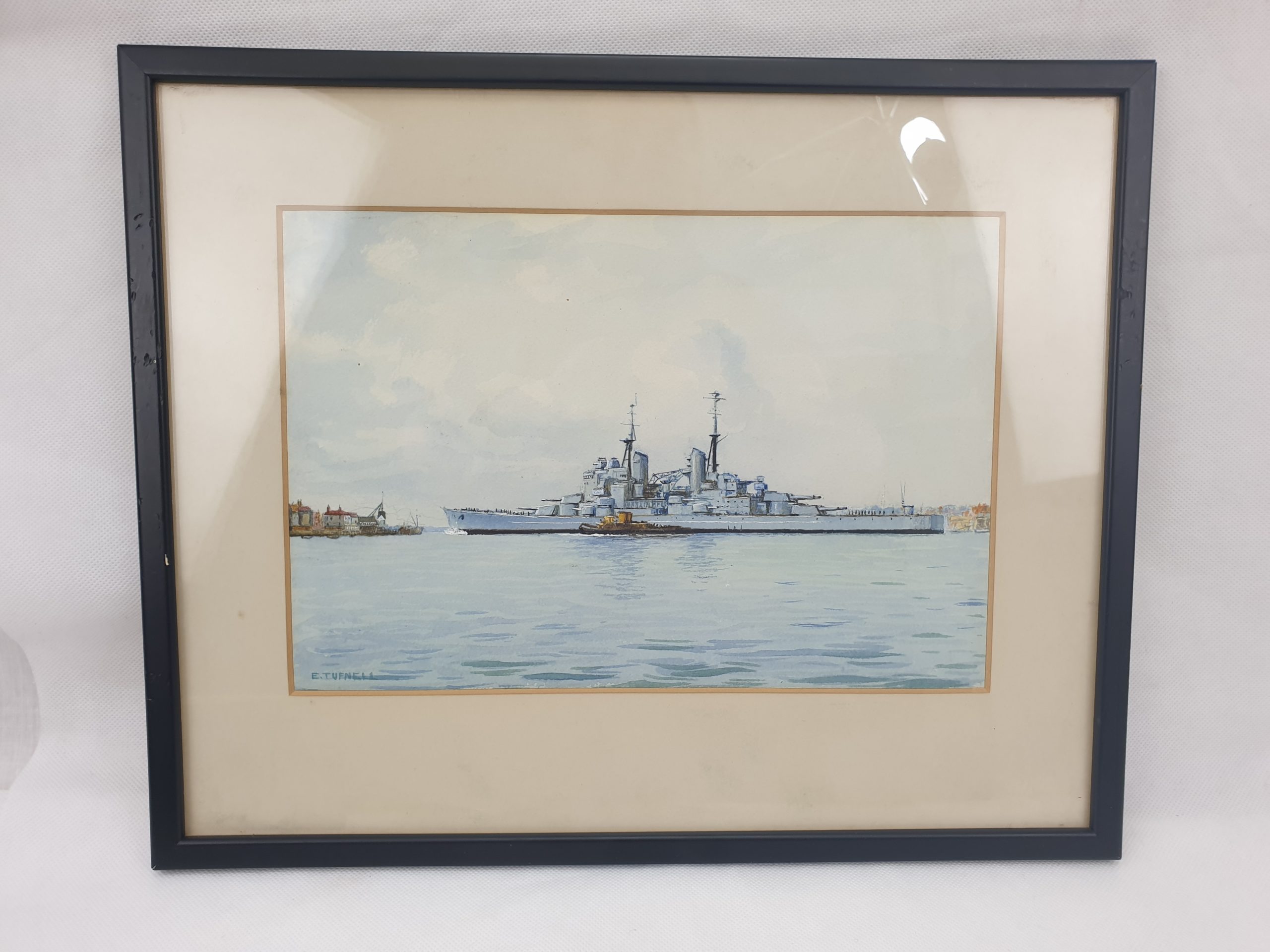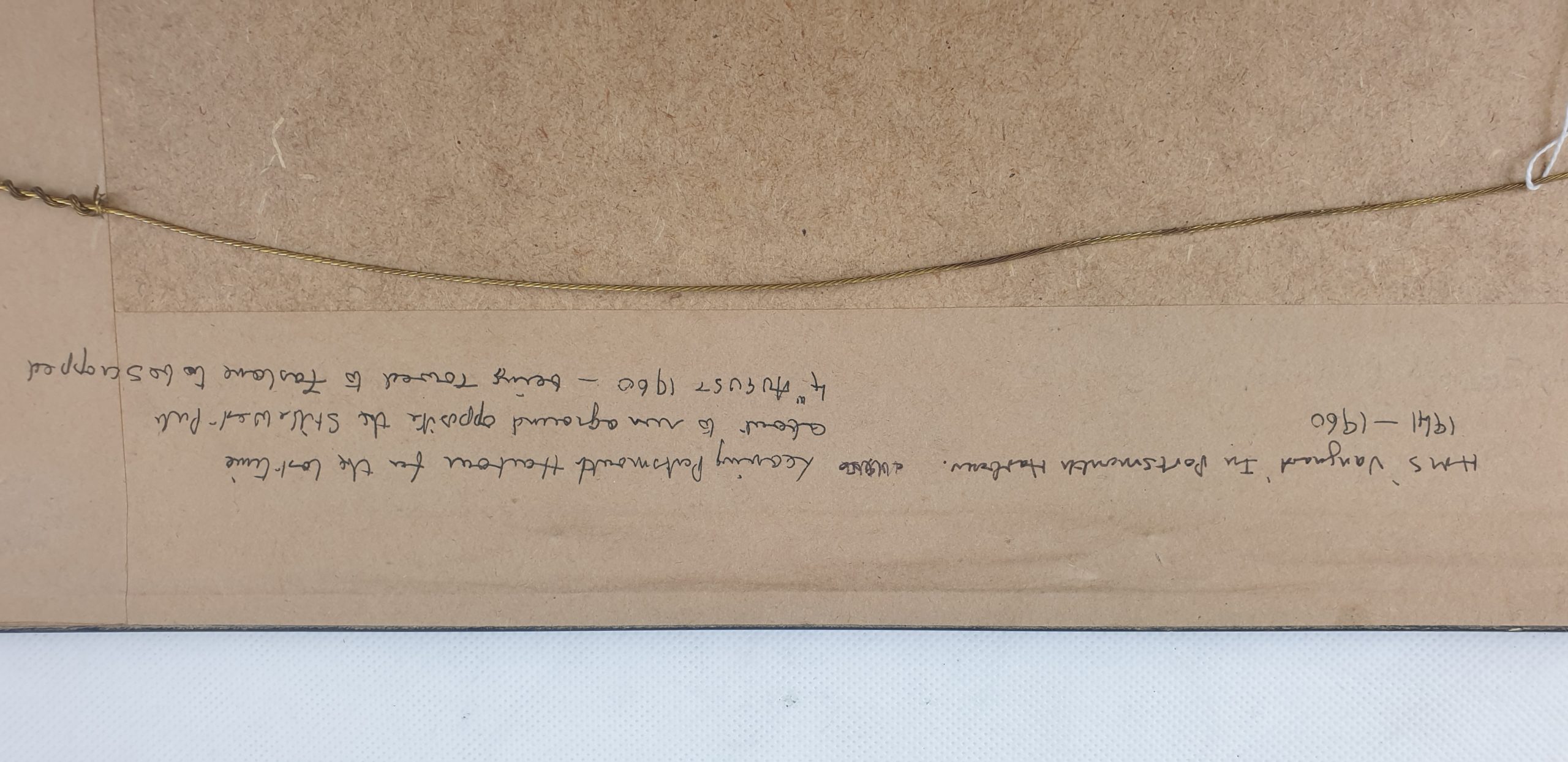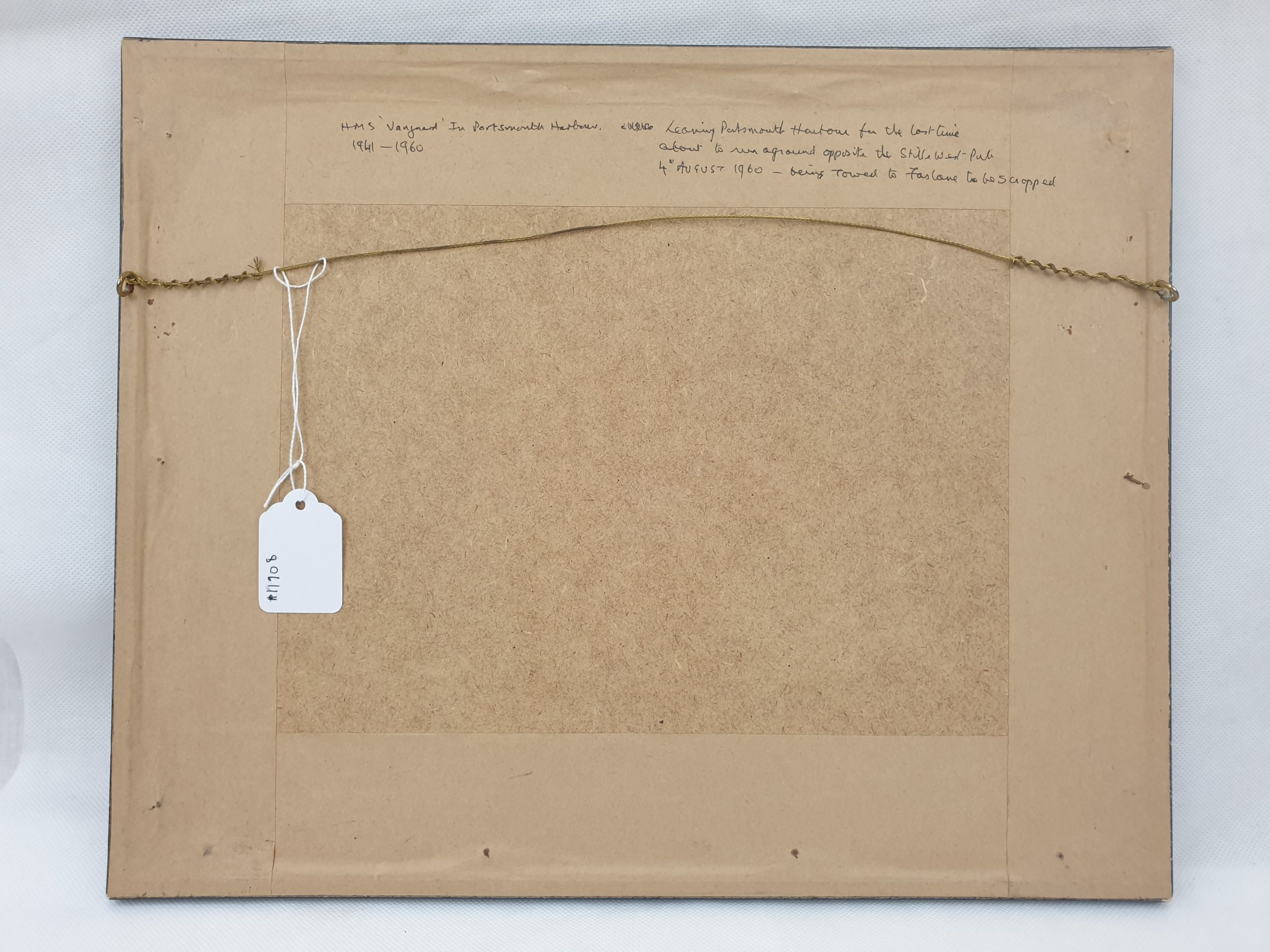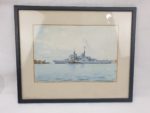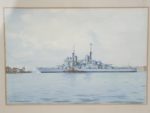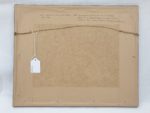~ HMS Vanguard 1946 1960 Watercolour By Eric Tufnell ~
The watercolour depicts HMS Vanguard in Portsmouth harbour on the 4th of August, 1960, when she went aground opposite the Still and West, Old Portsmouth whilst being towed to Faslane to be scrapped. It is presented in a black glazed wooden frame. Pencilled details are to the reverse. It is signed lower left.
~ HMS Vanguard ~
HMS Vanguard was a British fast battleship built during the Second World War and commissioned after the war ended. She was the biggest and fastest of the Royal Navy’s battleships, the only ship of her class, and the last battleship to be constructed by the Royal Navy (RN).
The RN anticipated being outnumbered by the combined German and Japanese battleships in the early 1940s, and had therefore started building the Lion-class battleships. However, the time-consuming construction of the triple-16-inch turrets for the Lion-class would delay their completion until 1943 at the earliest. The British had enough 15-inch (381 mm) guns and turrets in storage to allow one ship of a modified Lion-class design with four twin-15-inch turrets to be completed faster than the Lion-class vessels that had already been laid down. Work on Vanguard was started and stopped several times during the war, and her design was revised several times during her construction to reflect war experience. These stoppages and changes prevented her from being completed before the end of the war.
Vanguard’s first task after completing her sea trial at the end of 1946 was, early the next year, to convey King George VI and his family on the first Royal Tour of South Africa by a reigning monarch. While refitting after her return, she was selected for another Royal Tour of Australia and New Zealand in 1948. This was cancelled due to King George’s declining health and Vanguard briefly became flagship of the Mediterranean Fleet in early 1949. After her return home in mid-1949, she became flagship of the Home Fleet Training Squadron. Throughout her career, the battleship usually served as the flagship of any unit to which she was assigned. During the early 1950s, Vanguard was involved in a number of training exercises with NATO forces. In 1953 she participated in Queen Elizabeth II’s Coronation Review. While she was refitting in 1955, the Admiralty announced that the ship was going to be put into reserve upon completion of the work. Vanguard was sold for scrap and was broken up beginning in 1960.
~ Eric Erskine Campbell Tufnell ~
Eric Tufnell was born in 1888 and his career in the navy started at the age of 15 where he became a cadet at HMS Britannia. By 1904 he had joined HMS Albion and was appointed the midship man who was required to keep a log book where he kept his sketches, photographs and newspaper cuttings (which is now kept in Surrey County Library’s).
He worked on many naval ships and was part of the operational team to try and salvage the HMS Montague, however eventually turned to servicing the naval submarines. He was promoted to Lieutenant on the HMS C7 in 1910 and gained his first Commander position in 1913 aboard the Submarine HMS A8. He then became a Commander across a selection of submarines including the HMS B8, D4, M18 and more.
He turned to art after he retired from the navy as a way to top up his pension and support his family. The majority of his customers were naval officers who commissioned him to paint accurate depictions of the boats they served on.
He had a studio at the tailors Gieves and Hawkes on The Hard in Old Portsmouth, this work was displayed there, until the premises closure.
~ Condition ~
The watercolour is in excellent condition. The frame is in good order with a few minor chips.
~ Dimensions ~
The frame is 41 cm (16 inches) wide by 33 cm (13 inches) tall.
The exposed watercolour is 28.5 cm (11.5 inches) wide by 19.5 cm (7.75 inches) tall.
304404191972PQA00#11908

